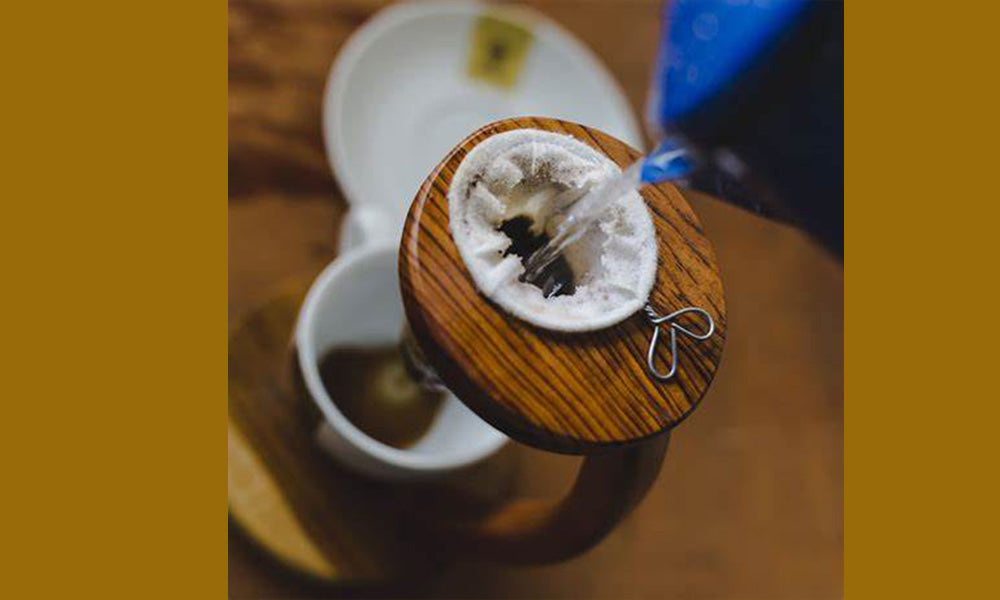
Costa Rican Chorreador: A 150-Year Journey Through Coffee Culture
Share
Of all the contributions Costa Rica has made to global coffee culture, none is more iconic than the traditional chorreador. This simple yet ingenious cotton or linen filter has been used for over 150 years to brew fresh, delicious coffee throughout the country.
Let's explore the origins and cultural significance of the ubiquitous Costa Rican chorreador.
The Dawn of Coffee in Costa Rica
While coffee plants first arrived in Costa Rica in 1779, commercial coffee cultivation didn't take off until the 1820s. At the time, most Costa Ricans started their days with corn-based drinks like pinolillo, while coffee remained an elite indulgence.
In the early 19th century, the government began actively promoting coffee production by distributing land and plants to citizens willing to cultivate coffee. These incentives worked - by the 1840s coffee had become Costa Rica's dominant export crop.
As coffee farms proliferated, the drink became more accessible to everyday Costa Ricans. But brewing a satisfying cup required artistry - beans had to be roasted, ground, and strained through fabric to produce a bold concentrate. The chorreador improved on these early brewing methods and helped fuel coffee's rise as the national beverage.
How the Iconic Chorreador Was Born
The earliest chorreadors were simply homespun cotton socks or cloth pouches used to strain a cup of coffee. Over time, the materials and techniques were refined to optimize extraction and consistency. The name itself derives from the Spanish verb "chorrear," meaning "to drip."
The classic chorreador consists of a reusable cotton filter mounted on a wooden or plastic ring. The key innovations were standardizing the filter's porosity and shape. The resulting brew was sublime - a smooth yet strong concentrate that highlighted the best flavors of Costa Rica's exceptional beans.
By the late 1800s, the chorreador had become ubiquitous in Costa Rican homes. For over a century, it has defined traditional coffee culture in the country.
Why Costa Ricans Love the Chorreador
Costa Ricans have remained loyal to the humble chorreador for several reasons:
- Simplicity - The basic materials are inexpensive and easy to maintain. No complex machinery means little can break.
- Ritual - Preparing chorreador coffee is a soothing morning tradition. Costa Ricans take pride in their brewing expertise.
- Flavor - The chorreador highlights coffee's natural essence and subtle flavors lost in automatic drips.
- National Pride - Using a chorreador celebrates Costa Rica's rich coffee heritage.
Though modern brewers are commonplace, most Costa Rican households still use chorreadors daily. Their passion is preserved through dedication to the ritual and superior taste.
Variations on a Theme
Of course, not all chorreadors are identical. Some common variations include:
- Filter Material - Cotton, linen, or synthetic fabrics like muslin or cheesecloth
- Filter Shape - Round, square, or "tulip" style
- Frame - Wood, plastic, wire, or even 3D printed
- Size - Personal single-cup to large multi-cup capacities
- Appearance - Colors and decorative patterns
But functionality remains constant - hot water is slowly dripped through fresh grounds to produce smooth concentrate.
The Chorreador Today
Walk into any Costa Rican home today and you'll still find the trusty chorreador brewing the morning's first cups. From country farms to urban apartments, it remains integral to daily life.
Their continued popularity stems from Ticos' meticulous coffee rituals. Choosing exceptional beans, grinding each batch fresh, and mastering extraction makes for rewarding morning craft.
Beyond homes, chorreadors are a staple of Costa Rican souvenir shops, allowing tourists to bring an authentic piece of coffee tradition home. But for Costa Ricans, the chorreador is more than a novelty - it's the embodiment of their coffee culture.
The next time you visit Costa Rica, be sure to enjoy coffee prepared the traditional chorreador way. Though modern innovations abound, this 19th century brewing invention has proudly stood the test of time. The iconic chorreador has charmed generations and will continue brewing exceptional Costa Rican coffee for years to come
